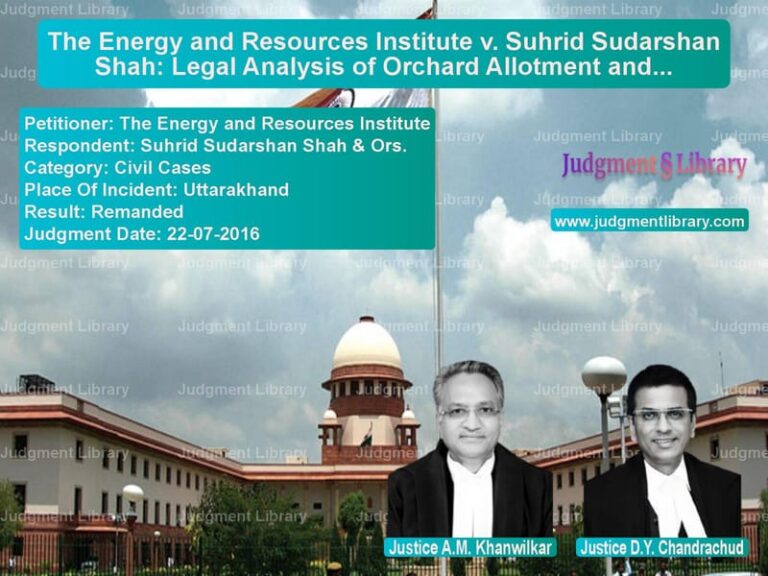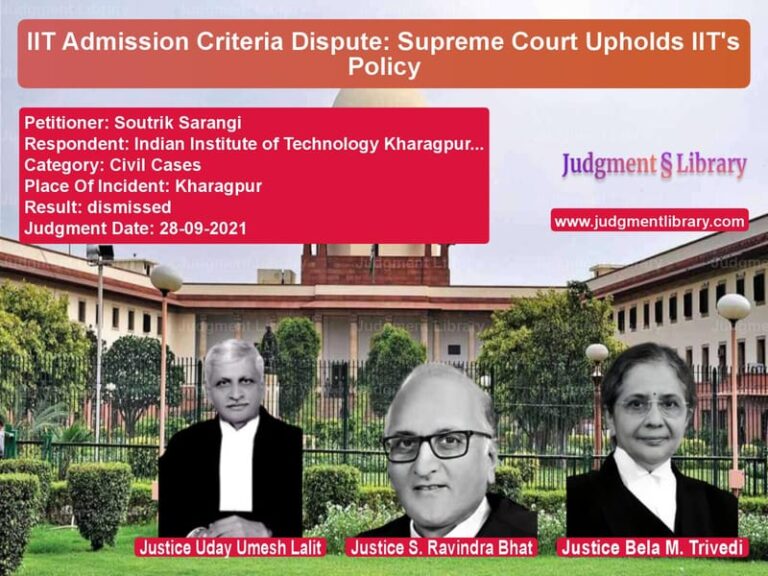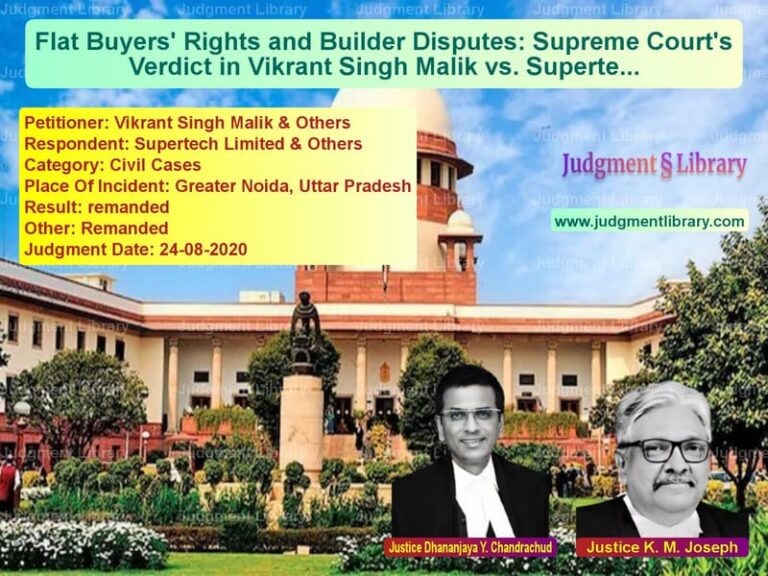Supreme Court Acquits Accused in Uttarakhand Murder Case: Analysis of Last Seen Evidence
The Supreme Court of India, in the case of Jabir & Ors. vs. The State of Uttarakhand, delivered a significant ruling addressing the role of circumstantial evidence, specifically the ‘last seen’ theory, in criminal jurisprudence. The court overturned the conviction of the accused, setting aside the judgment of the Uttarakhand High Court, and acquitted them of the charges of murder under Section 302 of the Indian Penal Code (IPC).
Background of the Case
The case involved the alleged murder of a 7-year-old boy named Haseen, whose body was found in a sugarcane field two days after he went missing. The prosecution built its case primarily on circumstantial evidence, arguing that the accused were last seen with the victim. The trial court and the Uttarakhand High Court convicted the accused based on this evidence.
The accused challenged the conviction in the Supreme Court, arguing that the ‘last seen’ theory alone was insufficient to establish guilt beyond a reasonable doubt, and that the prosecution had failed to provide a complete chain of circumstantial evidence linking them to the crime.
Key Legal Issues Considered
- Whether the ‘last seen’ theory, without corroborating evidence, could form the sole basis for conviction.
- Whether the delay in filing the FIR raised doubts about the prosecution’s case.
- Whether the prosecution had established a continuous chain of events linking the accused to the crime.
- Whether the trial court and High Court had erred in evaluating the evidence and convicting the accused.
Arguments of the Petitioners (Accused)
The accused, represented by their counsel, argued the following points:
- Delay in FIR: The FIR was lodged more than 42 days after the alleged incident, raising doubts about its credibility.
- Unreliable Witnesses: The prosecution’s key witnesses were close relatives of the deceased, and their testimonies were inconsistent and contradictory.
- No Direct Evidence: There was no forensic or material evidence linking the accused to the crime.
- ‘Last Seen’ Theory Insufficient: The accused contended that mere presence with the victim at a given time was not sufficient to establish guilt.
- Alternative Suspects: Initial suspicions pointed towards other individuals, but the police did not investigate them thoroughly.
Arguments of the Respondents (Prosecution)
The State of Uttarakhand, represented by the prosecution, argued that:
- The ‘Last Seen’ Theory Established Guilt: Multiple witnesses testified that the deceased was last seen with the accused.
- Chain of Circumstances: The prosecution claimed that the cumulative effect of evidence pointed towards the guilt of the accused.
- Credibility of Witnesses: The prosecution maintained that the witnesses were reliable and had no reason to falsely implicate the accused.
- Reasonable Time Gap: The time between the victim being last seen and the discovery of the body was short enough to reasonably exclude the possibility of another perpetrator.
Supreme Court’s Judgment
The Supreme Court, after a thorough review of the evidence and legal principles, ruled in favor of the accused and overturned the conviction. The key findings of the Court were as follows:
- ‘Last Seen’ Theory Alone Cannot Establish Guilt: The Court reiterated that in cases based on circumstantial evidence, every link in the chain must be established beyond a reasonable doubt. The ‘last seen’ theory alone, without any further corroboration, was insufficient to convict.
- Delay in FIR Raised Doubts: The Court noted that the unexplained delay in filing the FIR weakened the prosecution’s case and suggested the possibility of fabricated evidence.
- Contradictions in Witness Testimonies: The Court found significant inconsistencies in the statements of key prosecution witnesses, casting doubt on their reliability.
- No Direct Evidence: The lack of forensic or scientific evidence linking the accused to the crime further weakened the case.
- Failure to Establish a Continuous Chain of Evidence: The prosecution failed to prove a complete chain of events leading from the last seen instance to the commission of the crime.
Conclusion
The Supreme Court’s decision in Jabir & Ors. vs. The State of Uttarakhand is a landmark ruling that strengthens the safeguards against wrongful convictions based on weak circumstantial evidence. By emphasizing the necessity of a complete chain of evidence and highlighting the limitations of the ‘last seen’ theory, the Court has reaffirmed the fundamental principle that guilt must be proven beyond a reasonable doubt. This judgment will serve as a guiding precedent in future criminal cases and will ensure that justice is served fairly and impartially.
Petitioner Name: Jabir & Ors..Respondent Name: The State of Uttarakhand.Judgment By: Justice S. Ravindra Bhat, Justice Pamidighantam Sri Narasimha.Place Of Incident: Uttarakhand.Judgment Date: 17-01-2023.
Don’t miss out on the full details! Download the complete judgment in PDF format below and gain valuable insights instantly!
Download Judgment: jabir-&-ors.-vs-the-state-of-uttarak-supreme-court-of-india-judgment-dated-17-01-2023.pdf
Directly Download Judgment: Directly download this Judgment
See all petitions in Murder Cases
See all petitions in Bail and Anticipatory Bail
See all petitions in SC/ST Act Case
See all petitions in Judgment by S Ravindra Bhat
See all petitions in Judgment by P.S. Narasimha
See all petitions in allowed
See all petitions in acquitted
See all petitions in supreme court of India judgments January 2023
See all petitions in 2023 judgments
See all posts in Criminal Cases Category
See all allowed petitions in Criminal Cases Category
See all Dismissed petitions in Criminal Cases Category
See all partially allowed petitions in Criminal Cases Category







